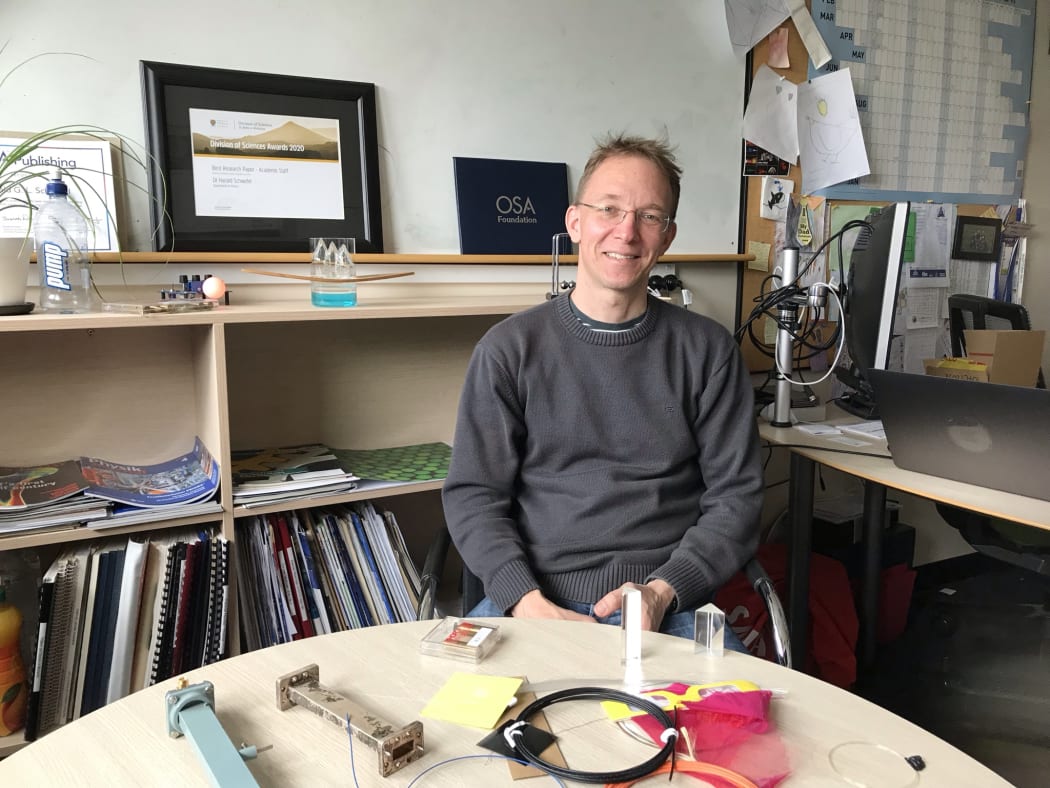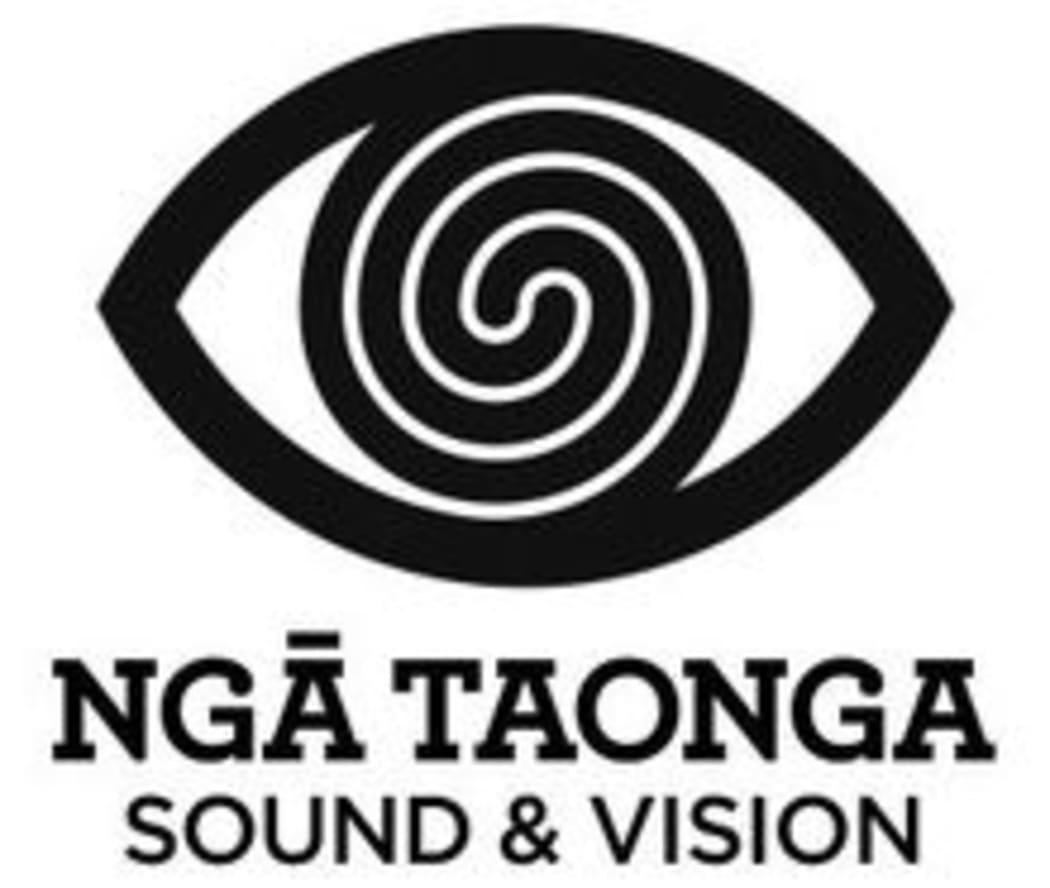How are you reading this? On a computer, laptop, mobile phone? Connected to the internet by a cable or wirelessly through the use of radiowaves? Instantaneous round-the-world communication is now an everyday - almost essential - part of life. And this week, radio celebrates a major milestone.

Associate Professor Harald Schwefel's research looks at improving the efficiency of communicating via light. Photo: RNZ / Claire Concannon
Follow Our Changing World on Apple Podcasts, Spotify, Stitcher, iHeartRADIO, Google Podcasts, RadioPublic or wherever you listen to your podcasts.
A century ago, on the 17th November 1921, Professor Robert Jack of the Physics department in the University of Otago completed New Zealand's first successful radio broadcast using equipment he had assembled in his lab. It was the beginning of radio stations in Aotearoa New Zealand.
That equipment sits in Tōitu Otago Settlers Museum in Dunedin today, to help tell the story of that broadcast. But Professor Jack was tapping in to technology that had already been explored by others across the world, and which can be traced back to the mid-1880s when physicist Heinrich Hertz was the first to deliberately produce radio waves.

Tōitu Otago Settlers Museum curator Pete Read in front of the early radio display. Photo: RNZ / Claire Concannon
Hertz was experimenting to prove the existence of electromagnetic waves - synchronised oscillations of electric and magnetic fields, waves of energy that can move through space. These electromagnetic waves exist on a spectrum from waves with a very long wavelengths (time between peaks) and low frequencies (number of wave oscillations per second) to those with very short wavelengths and high frequencies.
By understanding the different properties and behaviours of waves along this spectrum, from radiowaves to microwaves, infrared, visible and UV light, X-rays and gamma rays, we have been able to harness their power.
Listen to the episode to hear Tōitu Otago Settlers Museum curator Pete Read talks about the background to that first broadcast by Professor Robert Jack. Then Associate Professor Harald Schwefel of the University of Otago explains how radio works and talks about his latest cutting edge research into improving communication via light.
Thanks to Ngā Taonga Sound and Vision for their help with archival audio. This episode also contains two sound files from NASA: Chorus Radio Waves within Earth's Atmosphere and Kepler: Star KIC7671081B Light Curve Waves to Sound.

Photo: Nga Taonga Sound and Vision


